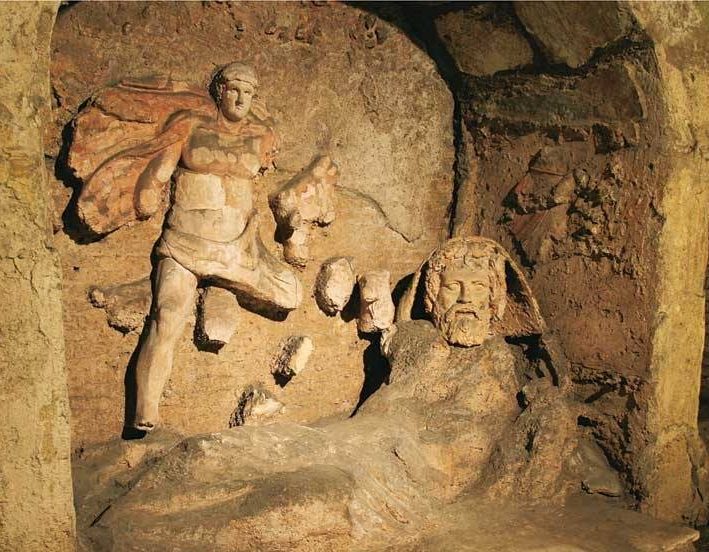Summary
A Peek Into Antiquity: Discovering the Mithraeum of Santa Prisca
Beneath the bustling streets of Rome lies the ancient Mithraeum of Santa Prisca, a subterranean temple dedicated to the god Mithras. This mysterious cult site dates back to the 2nd century AD, offering a rare look at the religion that rivaled early Christianity. Visitors can explore the remaining artifacts that highlight Mithraic rituals, such as the iconic image of Mithras slaying the bull. The preservation of the frescoes and the layout of the site provide valuable insights into the secretive gatherings that once took place here, evoking intrigue and fascination among history enthusiasts.
Get your dose of History via Email
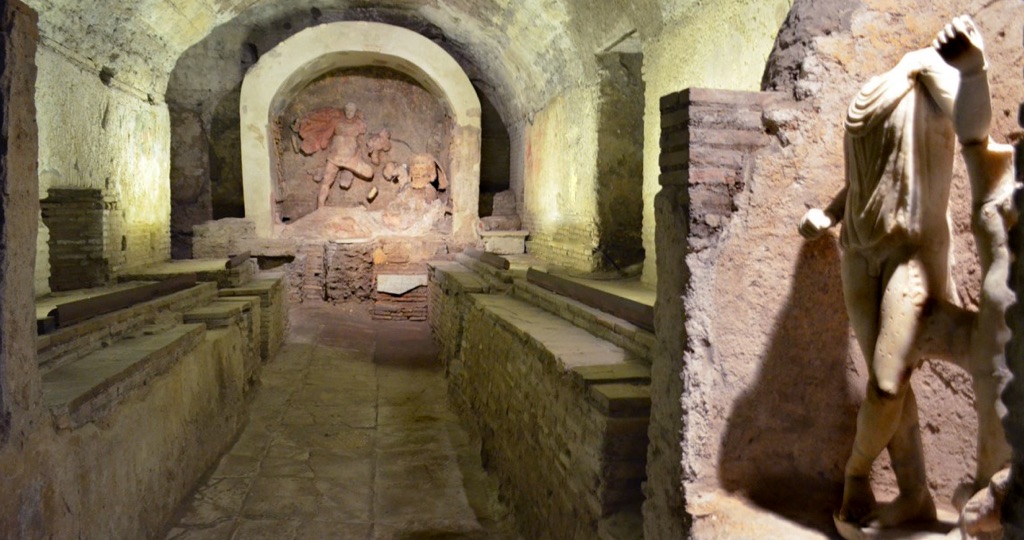
Architectural Mastery and Symbolism
Remarkably intact, the architecture of the Mithraeum of Santa Prisca sheds light on the esoteric practices of the Mithraic faithful. The temple’s structure, featuring a narrow central aisle flanked by podiums, symbolizes the cave where Mithras was believed to have slain the bull. This act, vital to the Mithraic mythology, is depicted in a vividly colored fresco that dominates the temple’s far end, serving as a focal point for ceremonies. The stairway leading downwards into the temple symbolizes a descent into the underworld, enhancing our understanding of the sacred space and its purpose within the heart of ancient Rome.
Significance and Legacy
The Mithraeum of Santa Prisca is significant not only for its well-preserved state but also for its contribution to the broader narrative of religious history in Rome. It stands as a testament to the cultural and religious diversity that flourished in the Empire before Christianity became dominant. Current research reveals how the Mithraic mysteries influenced Christian iconography and liturgy, underscoring the interconnectedness of different belief systems. Ranking as a pivotal historical and religious site, the Mithraeum continues to captivate scholars and tourists alike with its enduring mystery and the window it provides into an ancient past.
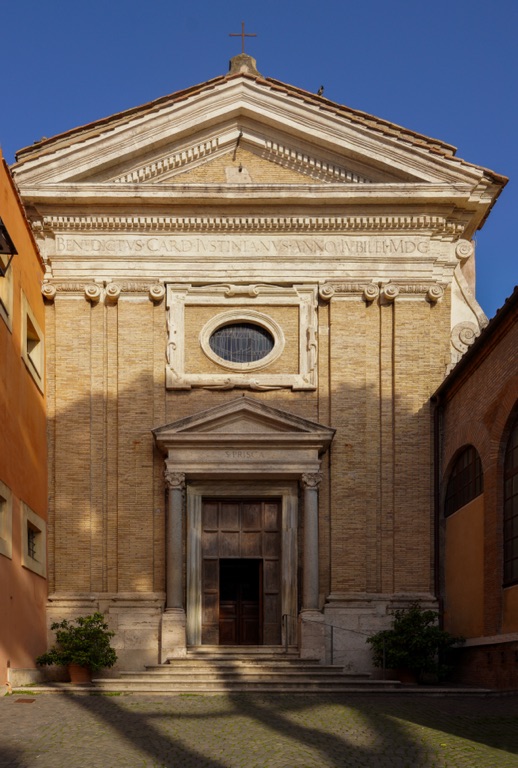
Historical Background of Mithraeum of Santa Prisca
Origin and Religious Roots
The Mithraeum of Santa Prisca in Rome takes one back to the 2nd century A.D when the cult of Mithras thrived. This underground sanctuary, hidden beneath a church, was dedicated to an enigmatic god worshipped by the Romans. Mithras, linked to Persian mythology, became the heart of a mystery religion that spread through the Roman Empire. His worshippers gathered in these secretive caves, known as mithraea, to perform their sacred rituals. The Mithraeum of Santa Prisca stands as a significant archaeological site, providing a glimpse into the religious diversity that existed in ancient Rome.
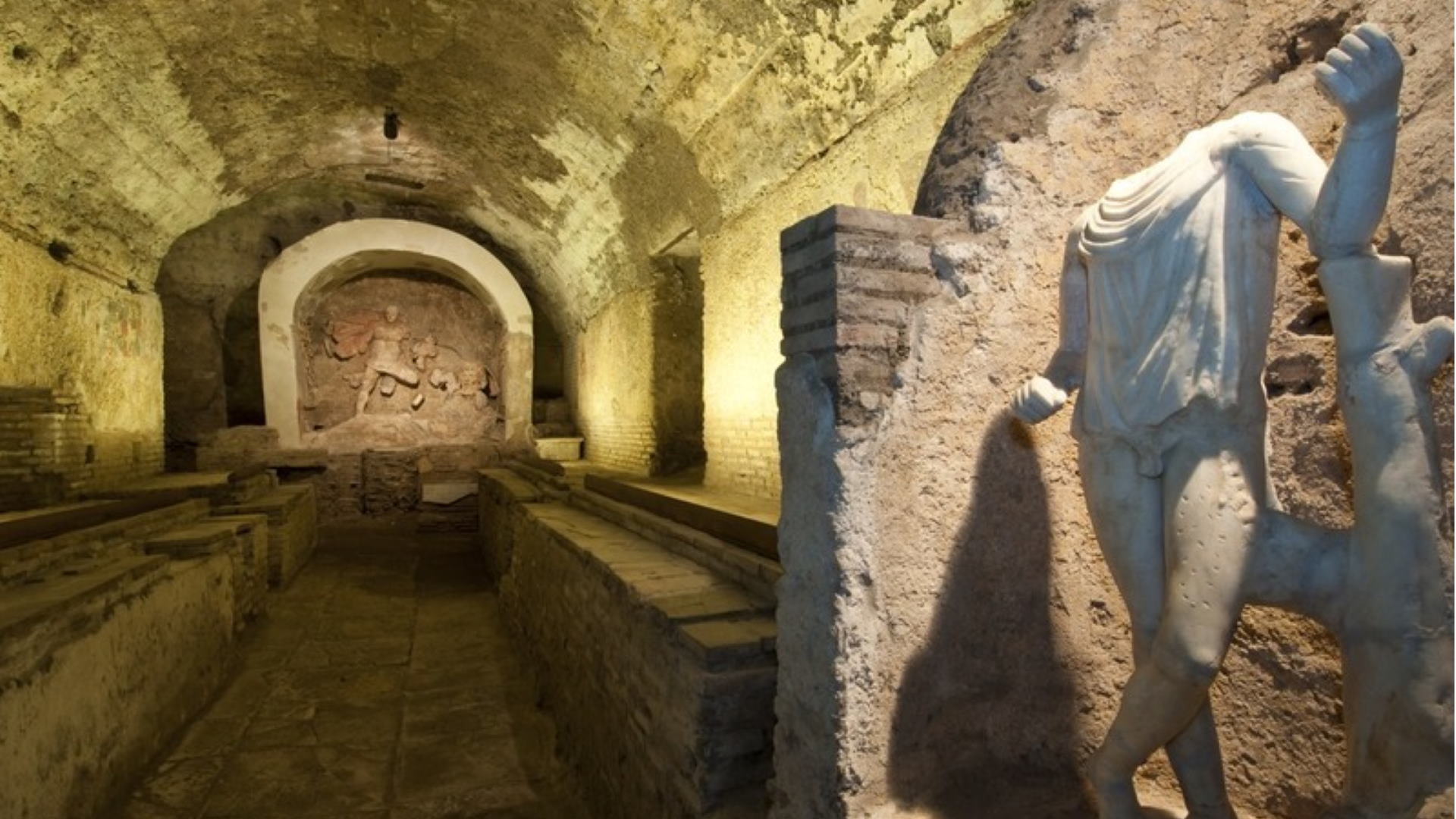
A Glimpse of the Devotional Practice
Inside the Mithraeum’s confining walls, believers engaged in initiation rites, feasts, and communal gatherings. Each ritual undertaken centered around the depiction of Mithras killing the sacred bull. As seen in the frescoes, this rite symbolized a cosmic struggle leading to life’s renewal. Archival research shows the Mithraeum’s structure was ideally suited for such intimate and mystic ceremonies. It allowed practitioners to immerse themselves in a transformative experience, away from the judging eyes of the world above.
Rediscovery and Significance
The Mithraeum lay forgotten beneath the earth until its rediscovery in the 20th century. Its excavation revealed a well-preserved altar, inscriptions, and sculptures that brought to life the forgotten practices of its followers. The site unveils narrative layers about the religious dynamics before Christianity gained ascendancy. It echoes the spiritual quests of an empire seeking divine favor. Moreover, its enduring symbols and inscriptions contribute profoundly to our understanding of Mithraic beliefs and their wider impact on Roman culture.
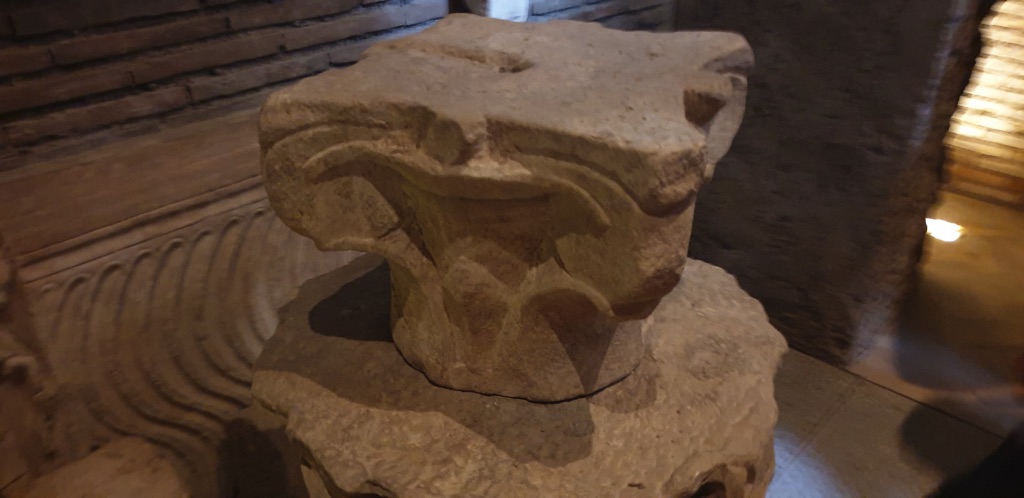
Architecture of the Sacred Space
A key feature of the Mithraeum of Santa Prisca is its architecture. The narrow passage, flanked by benches, points to a careful design meant to foster a close community. At the end of the aisle, an apse held the altars and the sacred imagery of the cult. Ingeniously, the Mithraeum utilizes natural elements to enhance ritualistic experience. The dim lighting, the cool temperatures, and the echoic sound effects amplified the mystical atmosphere, making the rites more intense and memorable for participants.
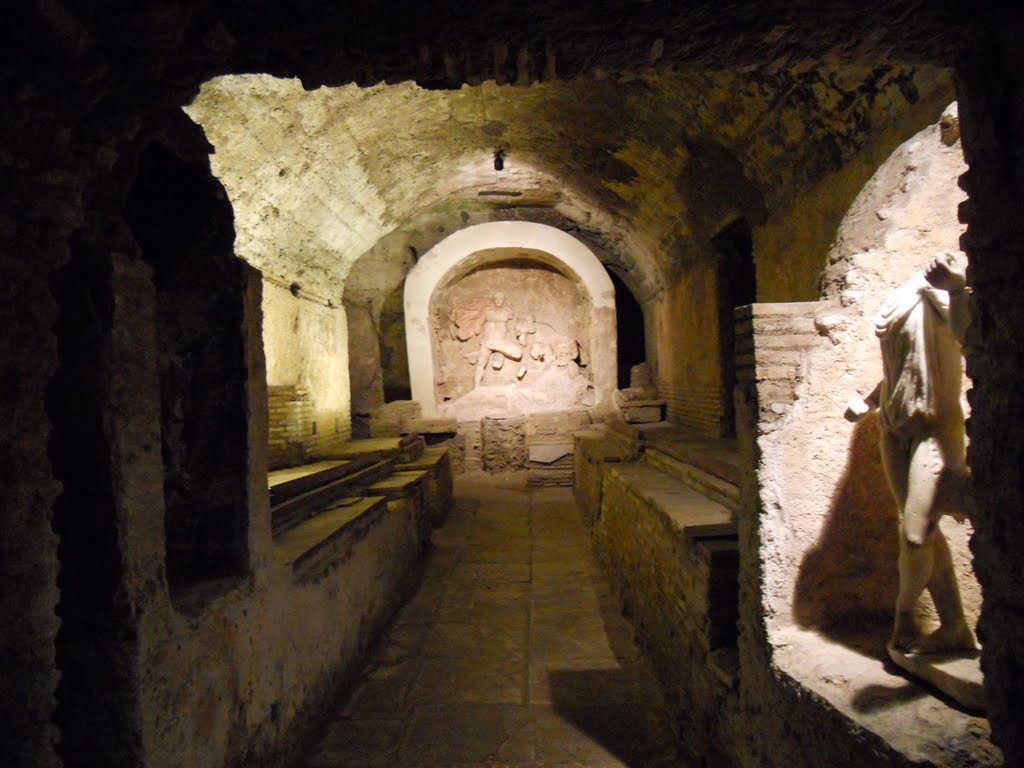
Legacy and Continuance
The enduring legacy of the Mithraeum of Santa Prisca lies in how it reflects ancient Rome’s cultural tapestry. It illustrates the coexistence of diverse religious beliefs, side by side with the classical pantheon. Even in a city marked by Christian landmarks, the Mithraeum remains a symbol of an age when multiple faiths intersected, influencing each other. Today, the site not only offers educational insight but also stands as an attraction melding historical curiosity with a sense of awe at the tenacity of human spirituality.
The Discovery of Mithraeum of Santa Prisca
Unearthing a Hidden Gem
The Mithraeum of Santa Prisca came to light in the 1930s during construction work at the site of the Santa Prisca church on Rome’s Aventine Hill. It was a happenstance discovery that soon became one of the city’s most remarkable archaeological finds. Under the guidance of experts, the ground gave way to reveal an ancient place of worship, lying in wait for centuries. The investigators uncovered the remnants of a religious sect that once rivaled the early Christians for the hearts of the Roman Empire.
Key Findings and Artifacts
Within the depths of the Mithraeum of Santa Prisca, archaeologists unearthed an array of artifacts steeped in historical and religious significance. They found altars, inscriptions, and sculptures that offered a direct connection to the ancient Mithraic mysteries. These materials not only showcased the artistic talents of the period but also had a pivotal role in the worship rituals. The discovery of a primary altar depicting Mithras slaying the bull became the focal point, shedding light on the symbolism and mythos of the Mithraic faith.
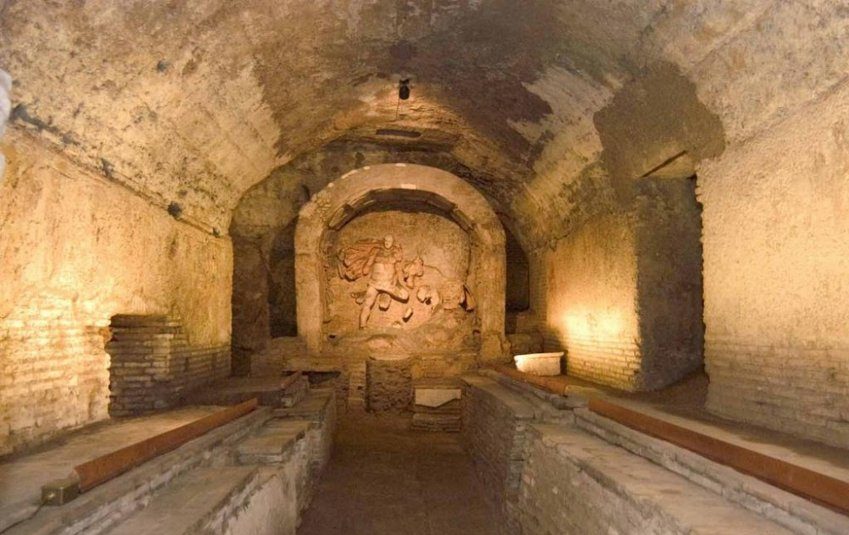
The Archaeological Team’s Efforts
It was the dedication of the archaeologists that led to a wider understanding of the site’s importance. They meticulously recorded and preserved each finding, which allowed for further study and conservation. Their work revealed the Mithraeum’s layout and design, providing insights into the architectural norms of such hidden temples. The complex had been preserved remarkably well, owing to its burial, and this aspect functioned as a time capsule, giving modern society a link to the distant past.
Understanding Mithraic Culture
From the precise way the site was excavated, depth into Mithraic culture became accessible. As researchers examined the space and its contents, the echoes of ancient religious practices resounded. The discovery allowed historians to piece together the rituals and beliefs that defined the worshippers of Mithras. It became evident that these practices were widespread throughout the Roman Empire, signifying an extensive cultural network that influenced countless lives before fading into obscurity.
Implications for Historical Scholarship
The Mithraeum’s discovery marked a turning point in the knowledge of religious diversity during the Roman Empire. Since its unearthing, the site has fueled academic debates and captured the public imagination. It reinforces the dynamic religious landscape of ancient Rome, presenting tangible evidence of a faith that once stood in close step with early Christian communities. This treasure trove of history deepens our perception of the complex tapestry that forms the backdrop to the religious evolution of Western civilization.
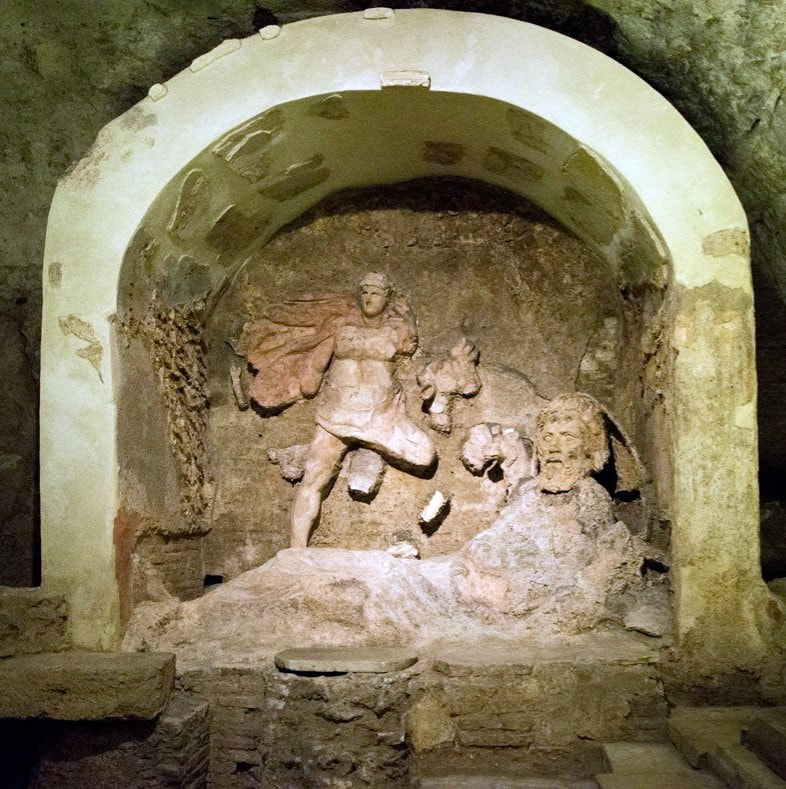
Cultural Significance, Dating methods, Theories and Interpretations
The Cultural Resonance of Mithraeum of Santa Prisca
The Mithraeum of Santa Prisca serves as a cultural beacon, showcasing the religious diversity of ancient Rome. Its existence is evidence of a once widespread cult that practiced its rites side by side with the burgeoning Christian faith. Scholars interpret the site as a living document that narrates a story of spiritual and communal values. The vivid depictions within, especially the iconic bull-slaying scene, are not just art. They represent the Mithraic conception of life, rebirth, and the passage of the cosmos, illustrating a belief system that deeply influenced Roman lives.
Dating and Analysis of the Mithraic Sanctuary
Determining the age of the Mithraeum has been crucial in understanding its place in history. Archaeologists used stratigraphy, studying the layers of earth that buried the site, and carbon dating to pinpoint its origins. What they found was a range of artifacts that suggested different periods of use and renovation, placing the sanctuary’s most active period around the 2nd to 4th century A.D. Additionally, the style of the frescoes and inscriptions corroborated this timeline, tying the Mithraeum’s use closely with the peak of the Mithraic religion’s popularity.
Theories Behind Mithraic Rituals
Theories about the Mithraic rituals have been diverse and complex. Some propose that the themes of death and rebirth within Mithraic art imply a belief in an afterlife. Others argue for astronomical interpretations, speculating that the Mithraeum’s subterraneous setting alludes to a cosmic dimension, mirroring the sky. The ritualistic meal depicted in reliefs, echoing a fellowship akin to early Christian Communion, suggests a formal ceremony of bonding among the initiates. These varied interpretations showcase a multifaceted religious practice rich in ritual and myth.
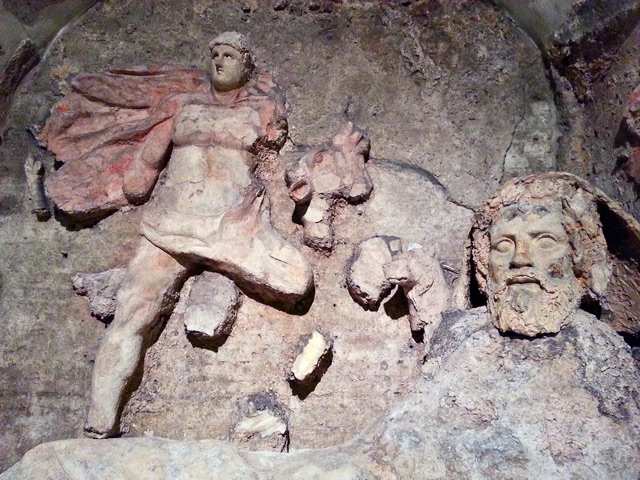
Interpretations of Architectural Design
The layout of the Mithraeum itself has generated interest in terms of symbolic interpretations. The benches along the walls accommodated the attendees in a way that facilitated communal engagement, facing the central space where rituals unfolded. The confined setting is believed to represent the universe, with the ceiling perhaps painted as the heavens—a theory supported by the cosmic symbolism in Mithraism. Thus, the architectural design might have been intentional, designed to create a microcosm of the Mithraic worldview.
Impacts on Later Cultural Development
Reflecting on the Mithraeum of Santa Prisca’s revelations, scholars incline towards the site’s broader cultural influences on the Roman world and, by extension, the Western heritage. The parallels in iconography and practice between the Mithraic mysteries and Christianity hint at a cross-fertilization of ideas. Moreover, the resilience of Mithraism, as evidenced by the Mithraeum, attests to its role in shaping the religious and philosophical discourse of the period, leaving an indelible mark on the cultural legacy of the Roman Empire.
Conclusion and Sources
The Mithraeum of Santa Prisca remains one of the most captivating vestiges of Rome’s rich tapestry of religious history. This subterranean temple not only illuminates the enigmatic worship of Mithras but also reflects the cultural synthesis characteristic of the Roman Empire. Dating methods and analyses of the site’s artifacts have offered insights into the practice and pervasive reach of the Mithraic cult. Interpretations of findings have spurred new understandings of ancient rituals and their place in the broader narrative of spiritual development. As this sacred space continues to be studied, it stands as a testament to the diverse beliefs that coexisted and shaped the course of Western civilization.
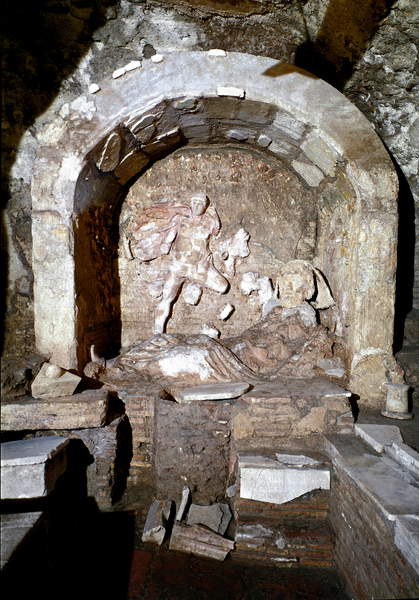
For further reading and to validate the information presented in this article, the following sources are recommended:
Or you can check any of these reputable archaeological and historical texts:
Beck, R., 2006. TheReligion of the Mithras Cult in the Roman Empire. Oxford University Press, New York.
Clauss, M., 2000. The Roman Cult of Mithras: The God and His Mysteries. Edinburgh University Press, Edinburgh.
Merkelbach, R., 1996. Mithras: A Religious and Mystical Theories of Mithraism. Königshausen & Neumann, Würzburg.
Ulansey, D., 1989. The Origins of the Mithraic Mysteries. Oxford University Press, New York.
Vermaseren, M.J., 1963. Mithras, the Secret God. Chatto & Windus, London.

